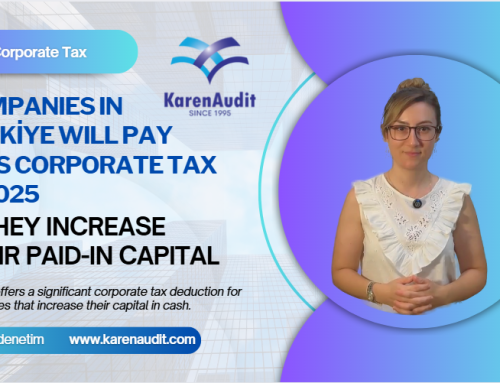US employment momentum slows sharply in July
What’s happened?
Nonfarm payrolls expanded by a tepid 73,000 in July, while gains over the prior months were revised down significantly by a cumulative 258,000. Private payroll gains in June were revised down from 78,000 to just 3,000; even with a rebound to 83,000 in July, this suggests that policy uncertainty is leading many firms to freeze hiring plans. The three-month average increase in total payroll employment fell to 35,000 in July, compared with 216,000 and 168,000 in 2023 and 2024 respectively, reflecting a big loss of momentum. Average hourly earnings (AHE) registered a 0.3% rise in July, but the year-on-year increase rose to 3.9%, from 3.7% in June.
This report, combined with recent firm inflation readings, makes clear that the stagflation scenario is real. Weakness was not confined to the Establishment Survey. Data from the separate survey of households showed a drop of 260,000 employed persons in June and a three-month average decline of 288,000. The civilian labour force shrank by 38,000 in June and has experienced average declines of 264,000 over the past three months. The unemployment rate edged up to 4.2% in July. As a result of roughly balanced declines in the labour force and employment, the unemployment rate has remained relatively stable, at either 4.1% or 4.2% each month in the year to date—a level broadly considered consistent with full employment.
Why does it matter?
What had been a gradual, if uneven, slowing in the trend growth of employment has accelerated in the past few months. The abrupt loss of momentum indicates that many firms put hiring plans on hold amid the recently elevated uncertainty stemming from the implementation of the administration’s tariff and other policies. Employment and wage gains drive personal income growth, which underpins consumer spending—the largest component of GDP. Continued weak employment gains, or even losses, sap strength from consumer spending and GDP, which have already slowed materially in the first half of this year. This weakening sharply raises the odds of a cut in the policy rate by the Federal Reserve (Fed, the central bank) at its mid-September policy meeting.
One silver lining is that total hours worked in private industries did increase in July after slipping in June, and registered an annualised gain of 0.7% over the past three months. This suggests some positive support to worker earnings, and is consistent with modest growth in private production.
Compositionally, the service-producing sectors are holding up the labour market. Employment in education and health services increased by 79,000, with the bulk of that in health care and special assistance (73,000). In the latter category, employment increased by 177,000 over the past year. Population ageing and the rapid spread of “vanity” health services (such as dental implants and body sculpting) support continued solid growth of healthcare related employment, which tends to be less susceptible to the employment headwinds posed by the adoption of artificial intelligence (AI). Other service sector gains included a small 5,000 rise in leisure and hospitality, which has risen by 54,000 over the past year. Government employment declined by 10,000 in July, reflecting job losses in the federal and local sectors. Local government employment rose by 162,000 over the past year, making it one of the leading contributors to job growth over that period.
Goods-producing sectors continue to lag, with manufacturing declining by 11,000 in July, while construction rose by 2,000. In manufacturing, employment weakness is the result of a long stretch of soft volume growth. Manufacturing industrial production was more or less flat over 2023 and 2024. It has turned up in the first half of this year, rising at an annualised rate of 2.6%, but those gains came largely from productivity increases rather than increased employment. Construction employment has been slowing quickly alongside overall construction activity. The strongest construction sector has been heavy and civil engineering, which has been supported by increased federal funding from the Infrastructure Investment and Jobs Act passed in 2021. This sector added more than 30,000 jobs in the 12 months to July.
Average hourly earnings (AHE), although decelerating, continue at a pace that is probably too rapid to be consistent with the Fed’s 2% inflation target. AHE rose by 0.3% in July and 3.9% over the past year. Although such solid increases are good for workers’ real wages, unless largely offset by increases in productivity, these gains will keep the growth of unit labour costs above 2%. In that case, businesses will want to pass those costs (and other costs such as those of tariff-related materials and component price increases) forward into prices to avoid a margin squeeze and an associated earnings hit. Broad measures of private-sector productivity are anticipated to rise in a range of 1.5-2%, but there is a lot of uncertainty around these projections. If productivity increases were to come in at the low end of the range, while AHE continues to rise near 4%, cost pressures will keep inflation elevated over the short to medium term. Adding to those pressures are increases in benefit costs, which are not reflected in AHE. To be sure, robust increases in income and demand would be needed to sustain those cost-driven price increases—something that is unlikely to continue for long as the Fed moves to lower inflation back to its 2% target, but such cost-driven price pressures do make the Fed’s job more difficult.
Data from the survey of households revealed a continued trend of a slowing in civilian employment, roughly matched by a similar slowing in the labour force. This suggests that the “break-even” pace of employment growth—the average level of job gains needed to keep the unemployment rate unchanged—has declined. The labour force has been more or less flat this year (since January), while employment declined by 277,000 as the unemployment rate varied between 4.1% and 4.2%.
What next?
The sudden loss of momentum in the labour market and previously released data suggesting a marked slowdown in domestic demand over the first half of this year are consistent with our view (and raise the odds) that the economy will slip into a technical recession over the second half of the year. In addition, the employment data, and especially the news contained in the large downward revision to employment gains in prior months, sharply increase the odds that the Fed will choose to cut rates at its September policy meeting, as we have forecast. Following the release of this morning’s report, futures markets swung from indicating odds of less than 50% of a September easing in the policy rate to now indicating a 79% probability of a rate cut. The weak report led the US president, Donald Trump, to lash out again at the Fed chair, Jerome Powell, for not already cutting the policy rate substantially. Such pressure is unlikely to have any influence over Mr Powell’s stance or over most of the other members of the Fed’s policymaking body.
Source: EIU
Legal Notice: The information in this article is intended for information purposes only. It is not intended for professional information purposes specific to a person or an institution. Every institution has different requirements because of its own circumstances even though they bear a resemblance to each other. Consequently, it is your interest to consult on an expert before taking a decision based on information stated in this article and putting into practice. Neither Karen Audit nor related person or institutions are not responsible for any damages or losses that might occur in consequence of the use of the information in this article by private or formal, real or legal person and institutions.







